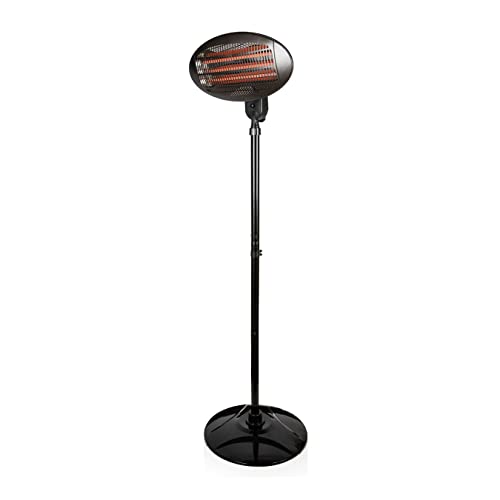11 "Faux Pas" That Actually Are Okay To Create Using Your Patio Heat Lamp Electric

How to Choose electric outdoor heater for patio
When you want to heat your patio, there are several options. Electric heaters are much more convenient than propane models which require refueling. They can be heated instantly by pressing a button or flipping a switch.
They don't emit gasses which could pose the risk of health hazards. Some units have adjustable heat settings to allow for different distances.
Type of Heater
With the appropriate patio heater, you will be able to relax in your outdoor living spaces well into the night, and throughout the seasons. Patio heaters are available in a variety of different styles, including freestanding propane or natural gas models and ceiling or wall-mounted electric radiant heaters. Your choice will depend on the size of the space, power sources and personal preference.
Most patio heaters use electricity, liquid or natural gas to generate heat. They emit heat through a combination convection heating and radiant heating. Their output of heat is measured in watts and can be converted to British thermal units (BTUs) to compare. Some models also have adjustable heat settings to allow for greater flexibility.
A patio heat lamp is the burner on top of a pole with a perforated screen that reflect the flames and sends the heat downward to warm furniture, people and other objects. Some have a reflector above the burner that can be plated with silver to decrease the amount of heat that is lost upwards.
The most popular kind of patio heater is a gas patio heater is typically found in outdoor areas of bars and restaurants since they produce a lot of heat quickly and distribute equally across all directions, making them ideal for warming tables. These heaters are portable and can run on a propane tank or connected to your natural gas line. The latter is more convenient and comes with lower upfront costs, but requires fuel.
A growing number of homes are outfitted with natural gas lines, making them the ideal option for those who prefer to use a gas-powered patio heater. These heaters are easy to install, however they require a gas line that is properly installed and operating to be secure. Portable natural gas heaters are available with extension hoses that can help overcome this limitation, but these can be a tripping risk and can create an additional fire risk when not in use.
Safety
Electric patio heaters can be used safely in enclosed areas since they allow heat to radiate upward and not outwards. However, they're not meant to be used on an open roof; the heater should be placed at minimum 18" from the walls adjacent to it or 6" from the ceiling to avoid fire hazards.
The propane and gas patio heaters are only suitable for installation in enclosed areas that have durable covers specifically designed for outdoor use. These covers are usually made of fire-retardant canvas and have an open roof that can be closed. The safety concerns with these types of outdoor patio heaters is due to the fumes and flames they release. They should be kept away from objects that ignite, such as curtains and chairs.
When installing an electric patio heat lamp or any kind of patio heater, always adhere to the manufacturer's instructions and safety precautions carefully. Be sure to choose a system with UL and CSA certifications, and read the owner's guide carefully. Be especially careful with pets and children and make sure the heater is not near them when it's running. Some patio heaters that stand on their own such as EUROM's have an automatic tipping safety that shuts off the device in the event of a fall.
If your patio heater uses a natural gas line it is important to examine the condition of the line periodically and to have it tested for leaks by an experienced professional. If the line needs to be replaced get it replaced by a licensed plumbing professional. A professional will be in a position to determine if the line is required to be connected to an underground pipe or not. A professional can also make sure that the patio heater is plugged in to an outlet that is GFCI-rated (ground fault circuit interrupter) to guard against electric shocks and fires.

Installation
The size of the patio heater determines the amount of heat it radiates into the room. It is important to place the heater at a safe distance from surfaces such as plastic that can deform, as well as wood, which may get too hot. It is possible to mount the heater on a structure, wall or any other surface with standard mounting brackets. Certain models come with a soft starter that reduces the current at the highest level to protect your circuits.
